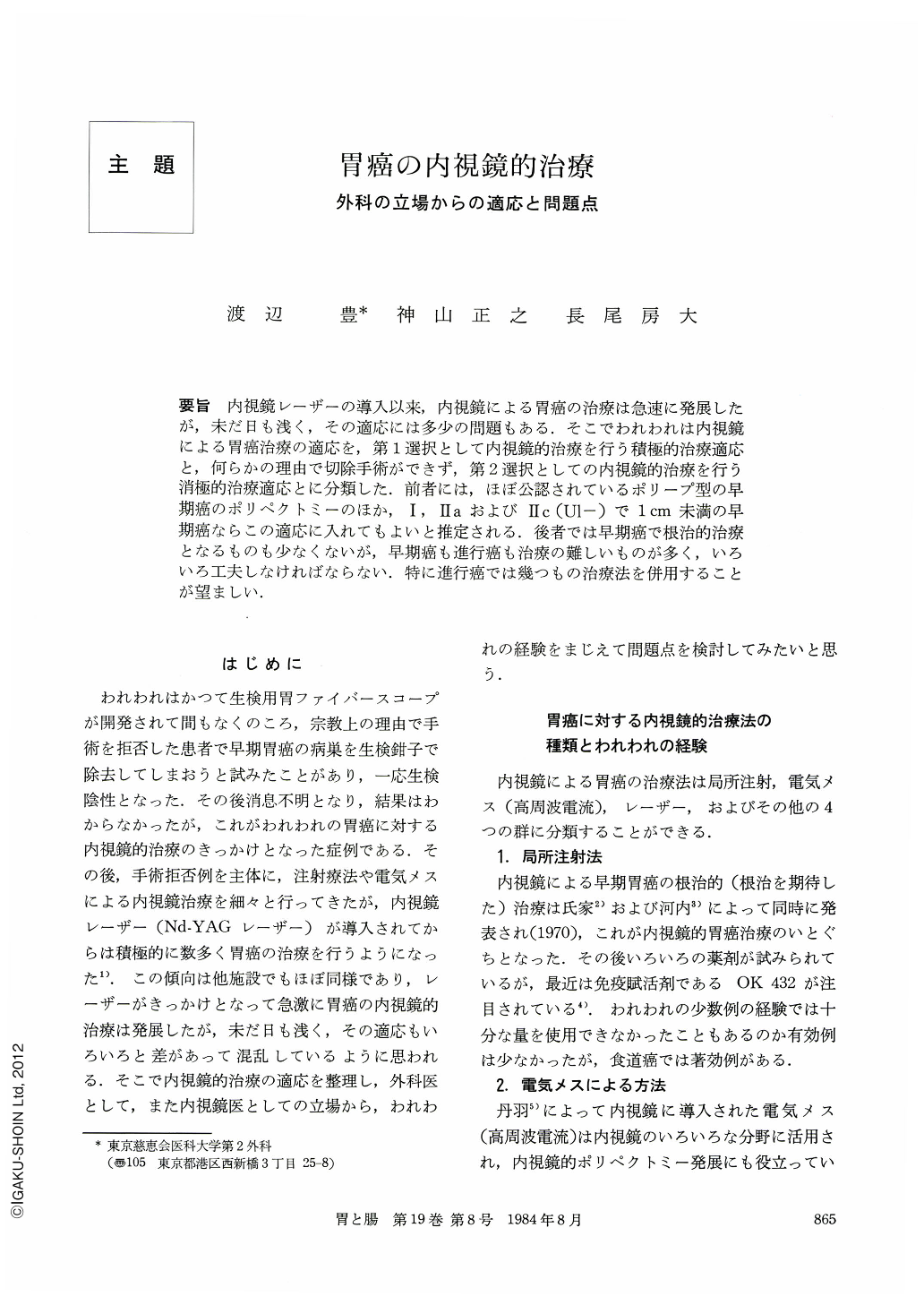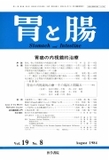Japanese
English
- 有料閲覧
- Abstract 文献概要
- 1ページ目 Look Inside
- サイト内被引用 Cited by
要旨 内視鏡レーザーの導入以来,内視鏡による胃癌の治療は急速に発展したが,未だ日も浅く,その適応には多少の問題もある.そこでわれわれは内視鏡による胃癌治療の適応を,第1選択として内視鏡的治療を行う積極的治療適応と,何らかの理由で切除手術ができず,第2選択としての内視鏡的治療を行う消極的治療適応とに分類した.前者には,ほぼ公認されているポリープ型の早期癌のポリペクトミーのほか,Ⅰ,ⅡaおよびⅡc(Ul-)で1cm未満の早期癌ならこの適応に入れてもよいと推定される.後者では早期癌で根治的治療となるものも少なくないが,早期癌も進行癌も治療の難しいものが多く,いろいろ工夫しなければならない.特に進行癌では幾つもの治療法を併用することが望ましい.
Endoscopic therapy for gastric cancer has progressed rapidly since laser endoscopy has been put into practice, but there still remain some problems in its indication because of its short history. To evaluate the indication of endoscopic therapy for gastric cancer, it is classified into two groups : one is positive indication in which endoscopic therapy is performed as the first choice, and the other is negative indication in which it is performed as the second choice because surgical operation is impossible for some reason. In the positive indication, it is found that types of early gastric cancer such as Ⅰ, Ⅱa and Ⅱc (Ul-) less than 1 cm in diameter are included in addition to the polypectomy for polypoid cancer that is now widely accepted as the indication of endoscopic therapy. In the negative indication, there are indeed a few cases which enable curative therapy for early gastric cancer. However, there are a lot of cases in which endoscopic therapy is difficult to perform in both early and advanced cancer. Thus, various tests are required, and it is recommended that various kinds of endoscopic therapy methods are used together especially for advanced cancer.

Copyright © 1984, Igaku-Shoin Ltd. All rights reserved.


